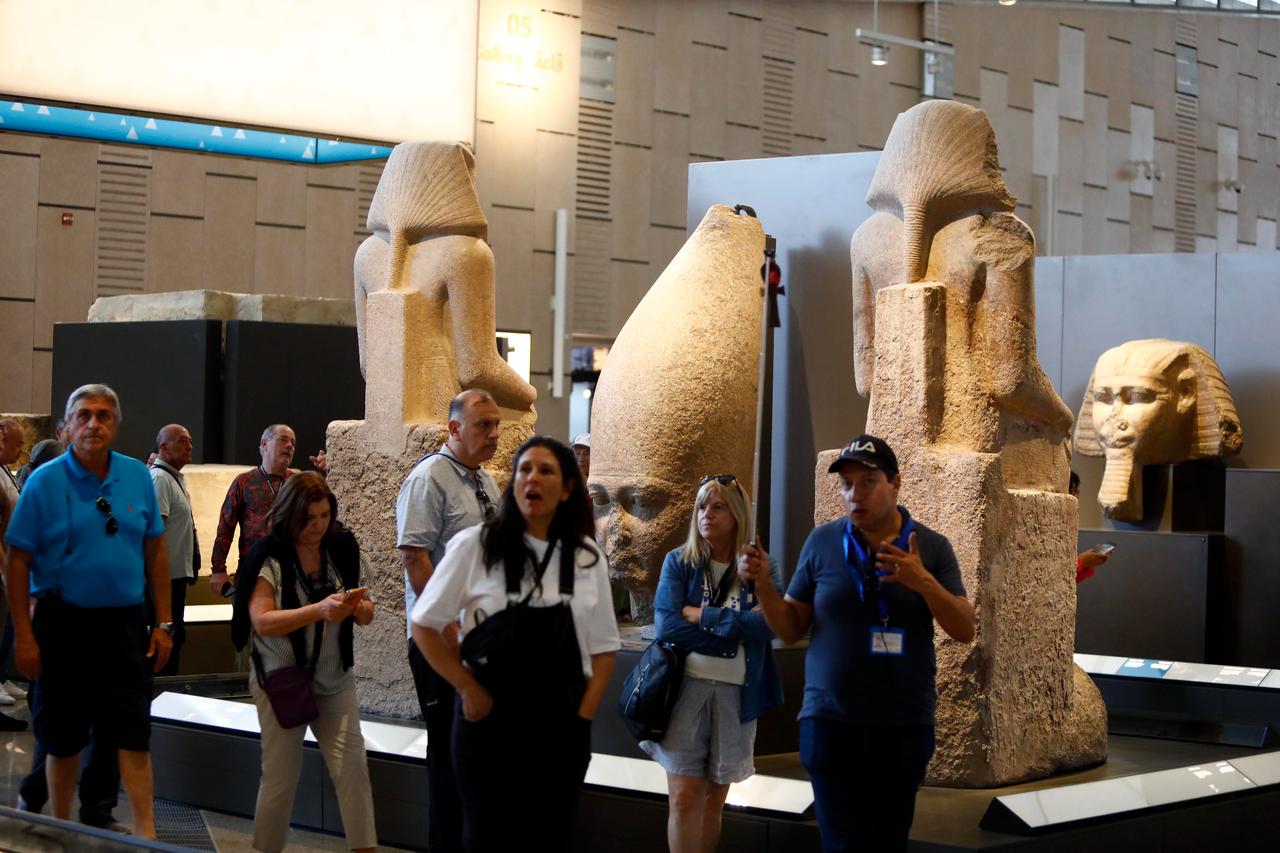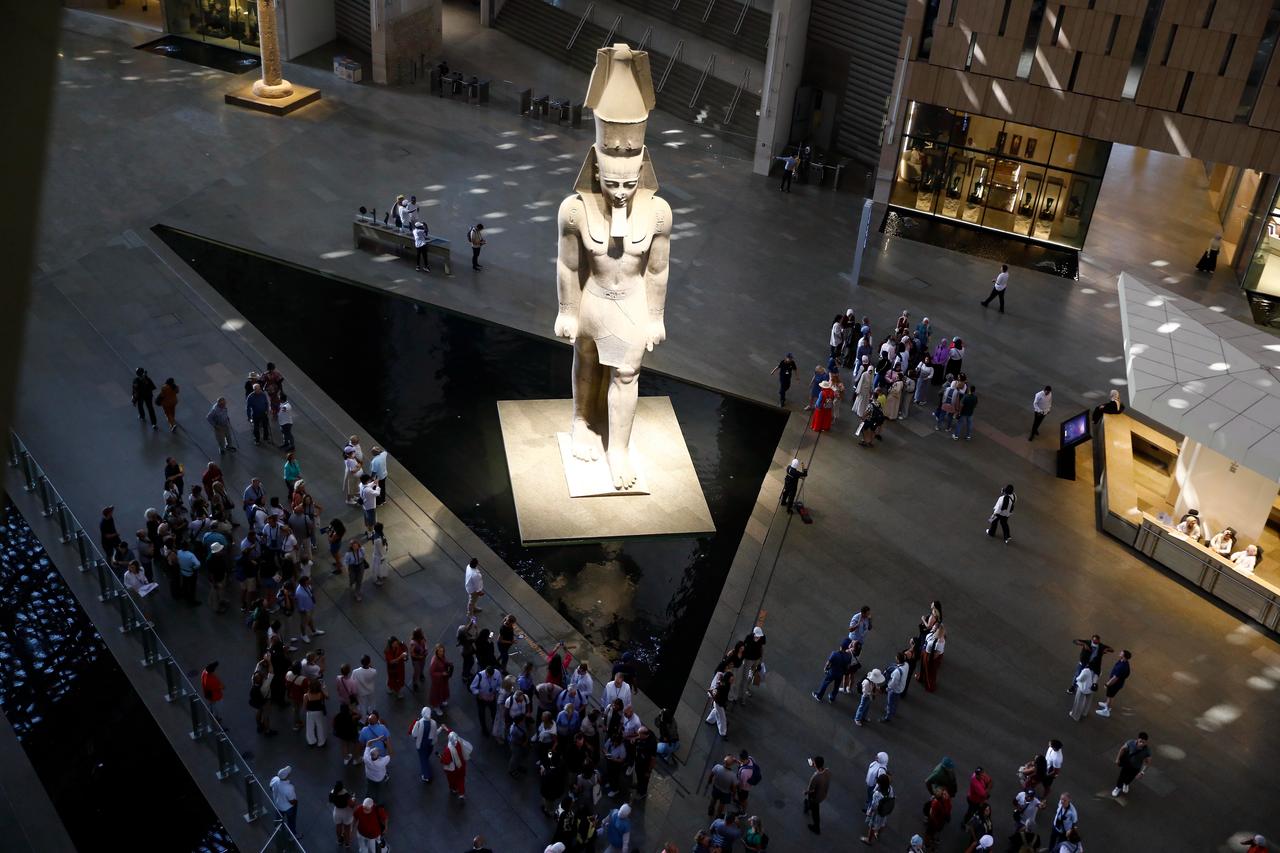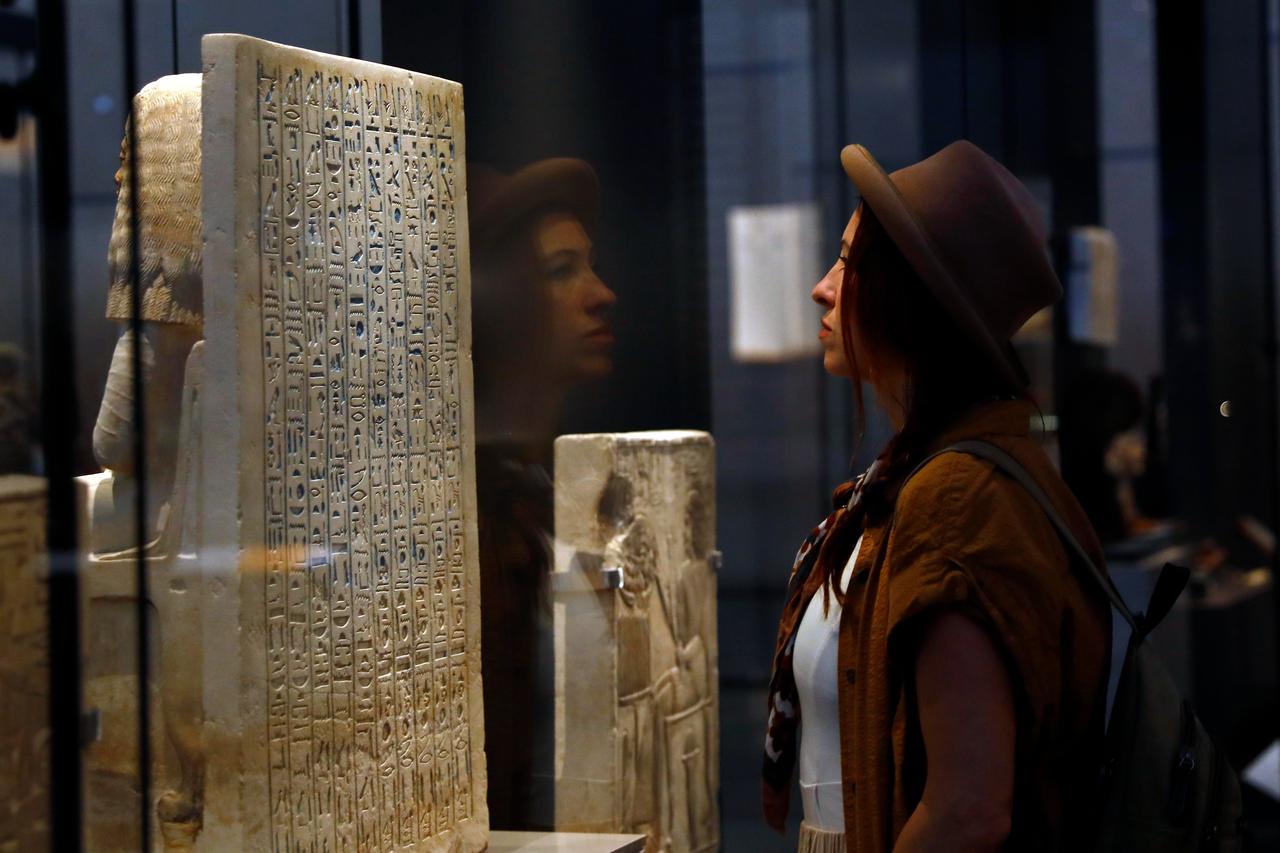
Egypt’s Ministry of Tourism describes the Grand Egyptian Museum as “the world’s largest museum dedicated to a single civilization,” positioning the complex as a gateway to the depth and range of ancient Egypt.
Set on a site that looks out over the Pyramids of Giza, the museum invites visitors to take in the landscape as part of the experience and walk into galleries that build on that sense of place.

First envisioned in the 1990s, the project moved forward in stages as the foundation was laid in 2002 and construction got underway in 2005.
The campus, which spans more than 300,000 square meters, reached completion in 2021, bringing years of planning and building to a close and tying the institution closely to the Giza plateau it overlooks.

The museum’s centerpiece is the full display of the Tutankhamun tomb assemblage, shown together for the first time since its 1922 discovery.
Alongside it stand the colossal statue of Ramses II and the solar boat of Pharaoh Cheops, drawing visitors toward objects that have long framed how ancient Egypt is seen and studied.
Contemporary forms and materials meet the desert horizon and the iconic pyramids next door, and the design aims to sit comfortably with that view while signaling a modern approach to display.